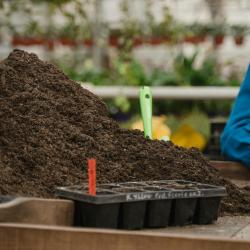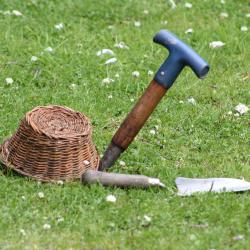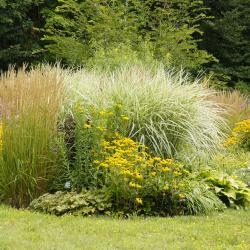Spring Cleaning for Your Garden: Essential Tasks to Start the Season
As winter reluctantly loosens its grip and the promise of warmer weather begins to beckon, gardeners everywhere feel the familiar stir of anticipation. Spring is not just a time for watching flowers bloom but is also a crucial period for garden maintenance. A well-executed spring cleaning can set the stage for a lush and vibrant garden that thrives throughout the growing season. Here’s a comprehensive guide to essential tasks you should undertake to get your garden ready for the months ahead.
1. Clear Away Winter Debris
The first step in spring cleaning your garden is to clear away any leftover debris from the winter months. This includes fallen leaves, branches, and any dead plant material. Removing this debris not only tidies up the garden but also prevents the spread of fungal diseases and pests that might have overwintered. Use a rake or a leaf blower to gather leaves, and consider adding them to your compost pile to enrich your soil later.
2. Prune and Trim
Early spring is the perfect time to prune shrubs and perennials, as most plants are still dormant and less likely to suffer shock from cutting. Remove dead or diseased wood and trim back branches that could impede growth or airflow. Pay attention to plants that flower on new growth, as pruning these now can encourage fuller blooms later. Always use sharp, sterilized tools to ensure clean cuts and prevent disease transmission.
3. Refresh the Soil
After months of dormancy, your soil is likely to be compacted and depleted of nutrients. Begin by gently tilling or turning the soil in your garden beds, which helps aerate and prepare it for new plantings. Incorporate organic matter such as compost or well-rotted manure to rejuvenate the soil’s nutrient profile. Conducting a soil test can also be beneficial; this will inform you of any specific amendments needed to balance pH levels or supply missing nutrients.
4. Divide and Transplant Perennials
Spring is an ideal time to divide overgrown perennials before they break dormancy. Dividing these plants not only helps manage their size but also encourages healthier growth and blooms. Replant divisions in well-prepared soil right away, ensuring they have ample space to grow. Transplant any shrubs or small trees if needed, taking care to disturb the roots as little as possible.
5. Inspect and Repair Garden Infrastructure
Fences, trellises, raised beds, and other garden structures often require maintenance after a harsh winter. Check for any damage such as rot or rust and make necessary repairs. This is also a good time to clean and repair garden tools, ensuring they are sharp and ready for the upcoming season. Consider applying a fresh coat of non-toxic paint or sealant to wooden structures to prolong their life and enhance their appearance.
6. Plan and Plant
With your garden refreshed and ready, you can begin planning your seasonal plantings. Consider the vegetables, herbs, and flowers you wish to grow, and create a planting schedule based on your local climate. Start seeds indoors for plants that require a lengthy growing period, or direct-sow hardy vegetables like peas and lettuce as soon as the soil is workable. Ensure you incorporate companion plants to promote biodiversity and natural pest control.
7. Mulch for Moisture and Weed Control
Applying a layer of mulch around your plants offers numerous benefits, from reducing weeds to conserving moisture. Choose organic mulch materials like shredded bark, straw, or wood chips and lay them down, being careful to keep them away from plant stems to prevent rot. Mulching not only enhances the aesthetic of your garden but also promotes a healthy, resilient ecosystem.
Conclusion
A thoughtful and thorough spring cleaning of your garden not only sets the stage for a successful growing season but also reconnects you with the natural rhythms of planting and growth. By tackling these essential tasks, you’ll ensure that your garden flourishes, offering beauty, bounty, and joy throughout the year. Happy gardening!






















